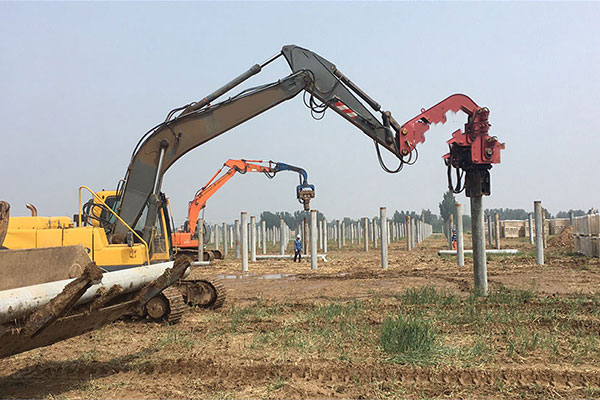Pile Hammer: A Comprehensive Guide
Pile hammers play a crucial role in construction and foundation projects, yet many people are unfamiliar with this powerful tool and its diverse applications. In this article, we’ll delve into the world of pile hammers, exploring what they are, how they work, and the various types available in the market.

What is a Pile Hammer?
A pile hammer is a specialized construction tool designed for driving piles into the ground to provide support for structures, such as buildings, bridges, and offshore platforms. Piles are long, slender columns made of materials like concrete, steel, or wood, and they are driven into the ground to transfer the load of a structure to a deeper, more stable soil or rock layer.
How Do Pile Hammers Work?
Pile hammers operate on the principle of kinetic energy transfer. The hammer is raised and released, allowing it to fall and strike the top of the pile. This impact generates a high amount of force, driving the pile into the ground. The efficiency of a pile hammer is determined by its ability to transfer the maximum amount of energy to the pile in the shortest amount of time.
Types of Pile Hammers
- Drop Hammers: These hammers consist of a heavy weight lifted to a certain height and then dropped onto the pile. Gravity propels the hammer, and the impact drives the pile into the ground.
- Diesel Hammers: Powered by diesel engines, these hammers use compressed air to drive a piston upward, creating a suction effect that lifts the hammer. When released, the hammer falls and impacts the pile.
- Vibratory Hammers: Instead of relying on impact, vibratory hammers use vibrations to drive piles into the ground. This method is particularly effective in dense or cohesive soils.
- Hydraulic Hammers: Powered by hydraulic systems, these hammers use pressurized fluid to move a piston, which, in turn, drives the pile into the ground. They are known for their precision and ability to control the impact energy.
Applications of Pile Hammers
- Bridge Construction: Pile hammers are commonly used to support the foundations of bridges, providing stability and load-bearing capacity.
- High-Rise Buildings: In urban environments, where space is limited, pile foundations are essential for constructing tall buildings. Pile hammers drive the foundational support needed for skyscrapers.
- Offshore Structures: Pile hammers are instrumental in the construction of offshore platforms, ensuring a secure foundation in challenging marine environments.
- Retaining Walls: Pile hammers are employed to create retaining walls, preventing soil erosion and providing stability for structures built on sloped terrain.
Conclusion
Pile hammers are indispensable in the construction industry, serving as the driving force behind secure and stable foundations. Whether it’s a towering skyscraper or an offshore platform, the efficiency and precision of pile hammers contribute significantly to the success of various construction projects.

